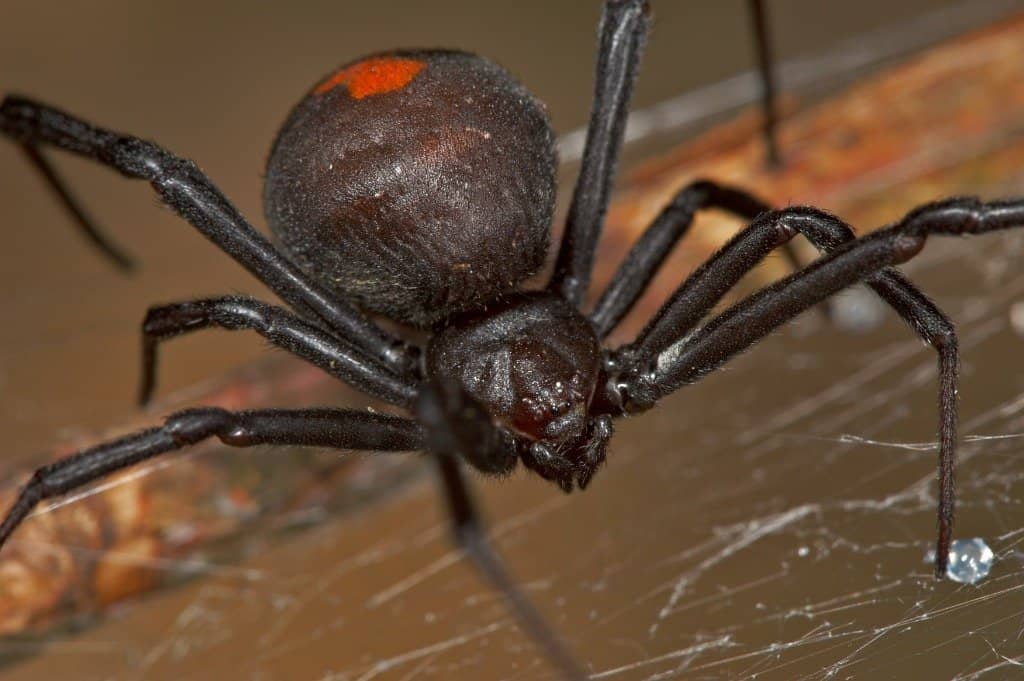Creepy crawlies are synonymous with life in Australia. We have a diverse range of spiders and other insects. But it’s no fun when a spider infestation hits your home or business. Identifying the type of spider is important, so that you know what kind of action can and should be taken. In Australia, we’re blessed with an enormous number of different species. Which is why expert services and treatments are essential when dealing with a spider infestation.
Spiders have eight legs, and can come in a range of colours and sizes. They usually posses a sac, an abdomen, and a head. They may be covered in fine hairs, and most spiders create visible spider webs both inside and outside your house or business. A number of spiders can of course, be dangerous to humans, such as redbacks and funnel webs. This is the most important reason as to why expert pest treatment is essential.
At Oracle Services, our team of pest control specialists utilises a range of technology and environmentally friendly treatments to safely remove spiders for good.
Exploring the Distinctive Characteristics and Habits



Consult a pest control expert for large spider infestations. We can assess the situation and apply a tailored, effective treatment to get rid of spiders and keep you safe.
We utilise effective and safe insecticides that eliminate all types of spiders, both indoors and outdoors. This is always done in an environmentally friendly manner.
Fogging, or bug bombs, can be useful in some situations. However, for certain infestations and locations they are not practical, as they do not penetrate cracks.
Odourless traps that are safe for pets and children are very effective in many situations, and they attract spiders quickly and efficiently.
Heat treatments are one of the most effective techniques to get rid of spiders, and this method requires the professionals. It removes oxygen from the spiders environment, killing it quickly.
If you remove spider webs as soon as they appear, you’ll be depriving spiders of a foothold in your home or business.
Spiders may be attracted to your home because of an infestation of other insects… which offer up a tasty meal! Eliminate these first.
There are a number of spider repellent products available. Make use of expert pest services to ensure that repellents are effective and safe.
Make sure you are removing any potential spider homes inside or close to entrances to your home. That includes tree stumps, stacks of rubbish and more.
Adding certain types of plants to your space can help repel spiders. These plants include lavender, mint, eucalyptus and citronella.
At Oracle Services, we know that preventing a spider infestation is always better (and safer) than treating it down the track. However, it’s not always easy to spot spiders until there’s too many of them, which is why expert pest inspections are so beneficial. Our team of experienced technicians will apply all of their skills and knowledge to discover and eliminate any spider infestations at home or at work before it’s too late.

The first step is a thorough inspection of your home or business. We’ll take the time to identify the type of spiders that you are dealing with and the source.
Once we have completed the inspection and identified the infestation and the offending spiders, we’ll consult with you regarding treatment.
We’ll plan the most effective strategy to eliminate your spiders quickly and safely, including at their nest so that they don’t simply reappear later on.
Our expert technicians will execute our pest control plan to maximum effect, aiming to eliminate all the spiders inside and outside while keeping you safe.
Once we’ve completed the pest control service, we will provide you with a plan to help prevent a re-infestation of spiders or other pests, giving you peace of mind.
These are some of the most common questions we get asked about pest control for spiders.
Unit 8, 849 South Dowling Street, Waterloo, NSW 2017
P: 02 9157 5706
E: info@oracleservices.com.au
Unit 8, 849 South Dowling Street
Waterloo, NSW 2017
P: 02 9157 5706
E: info@oracleservices.com.au